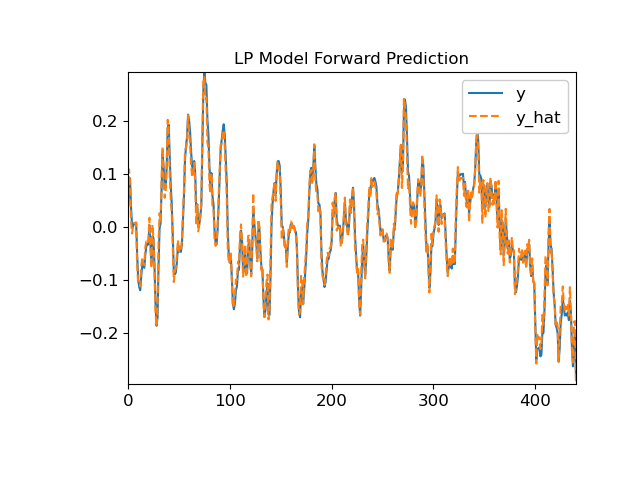Caution
You're reading an old version of this documentation. If you want up-to-date information, please have a look at 0.9.1.
librosa.core.lpc¶
- librosa.core.lpc(y, order)[source]¶
Linear Prediction Coefficients via Burg’s method
This function applies Burg’s method to estimate coefficients of a linear filter on y of order order. Burg’s method is an extension to the Yule-Walker approach, which are both sometimes referred to as LPC parameter estimation by autocorrelation.
It follows the description and implementation approach described in the introduction in [1]. N.B. This paper describes a different method, which is not implemented here, but has been chosen for its clear explanation of Burg’s technique in its introduction.
- 1
Larry Marple A New Autoregressive Spectrum Analysis Algorithm IEEE Transactions on Accoustics, Speech, and Signal Processing vol 28, no. 4, 1980
- Parameters
- ynp.ndarray
Time series to fit
- orderint > 0
Order of the linear filter
- Returns
- anp.ndarray of length order + 1
LP prediction error coefficients, i.e. filter denominator polynomial
- Raises
- ParameterError
If y is not valid audio as per util.valid_audio
If order < 1 or not integer
- FloatingPointError
If y is ill-conditioned
See also
Examples
Compute LP coefficients of y at order 16 on entire series
>>> y, sr = librosa.load(librosa.util.example_audio_file(), offset=30, ... duration=10) >>> librosa.lpc(y, 16)
Compute LP coefficients, and plot LP estimate of original series
>>> import matplotlib.pyplot as plt >>> import scipy >>> y, sr = librosa.load(librosa.util.example_audio_file(), offset=30, ... duration=0.020) >>> a = librosa.lpc(y, 2) >>> y_hat = scipy.signal.lfilter([0] + -1*a[1:], [1], y) >>> plt.figure() >>> plt.plot(y) >>> plt.plot(y_hat, linestyle='--') >>> plt.legend(['y', 'y_hat']) >>> plt.title('LP Model Forward Prediction') >>> plt.show()
